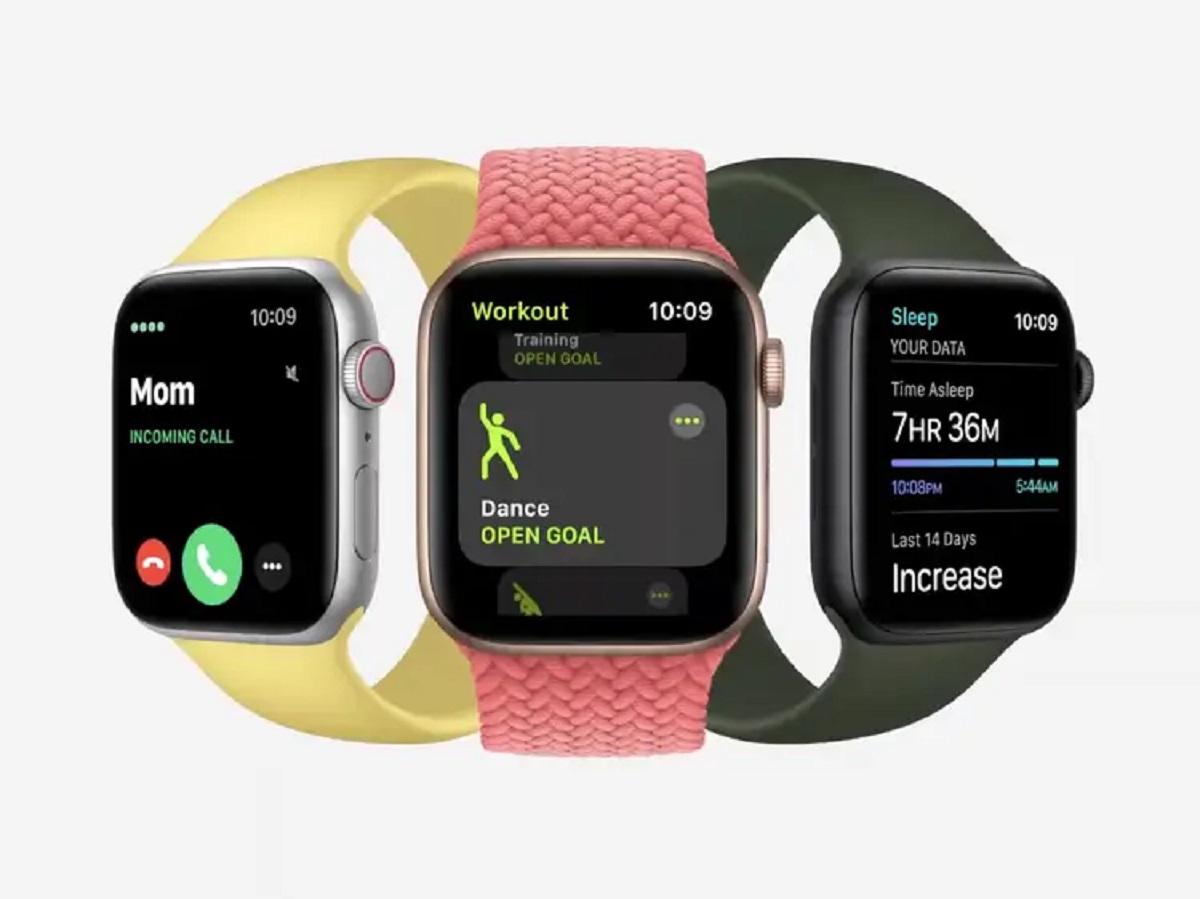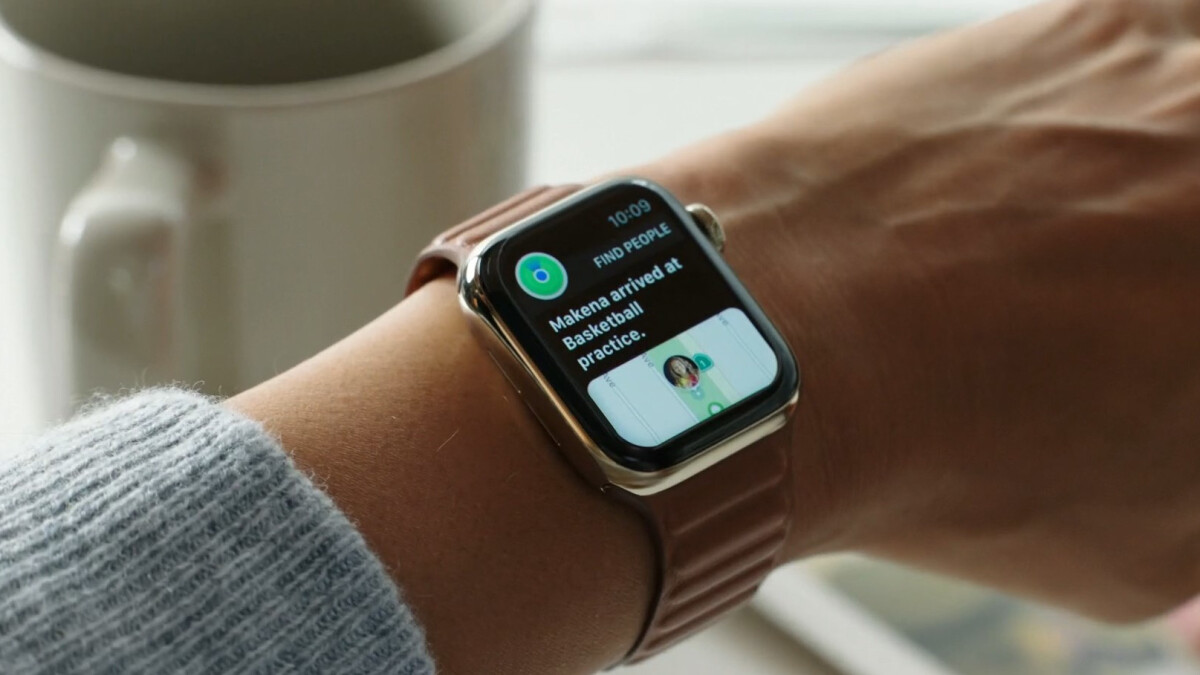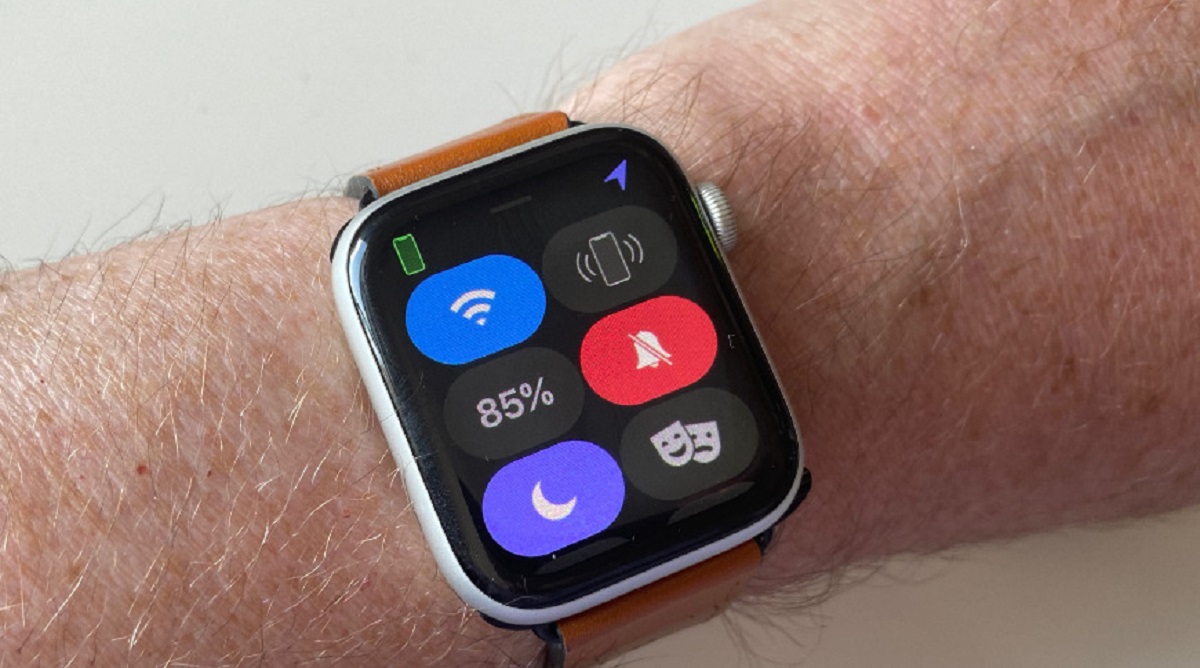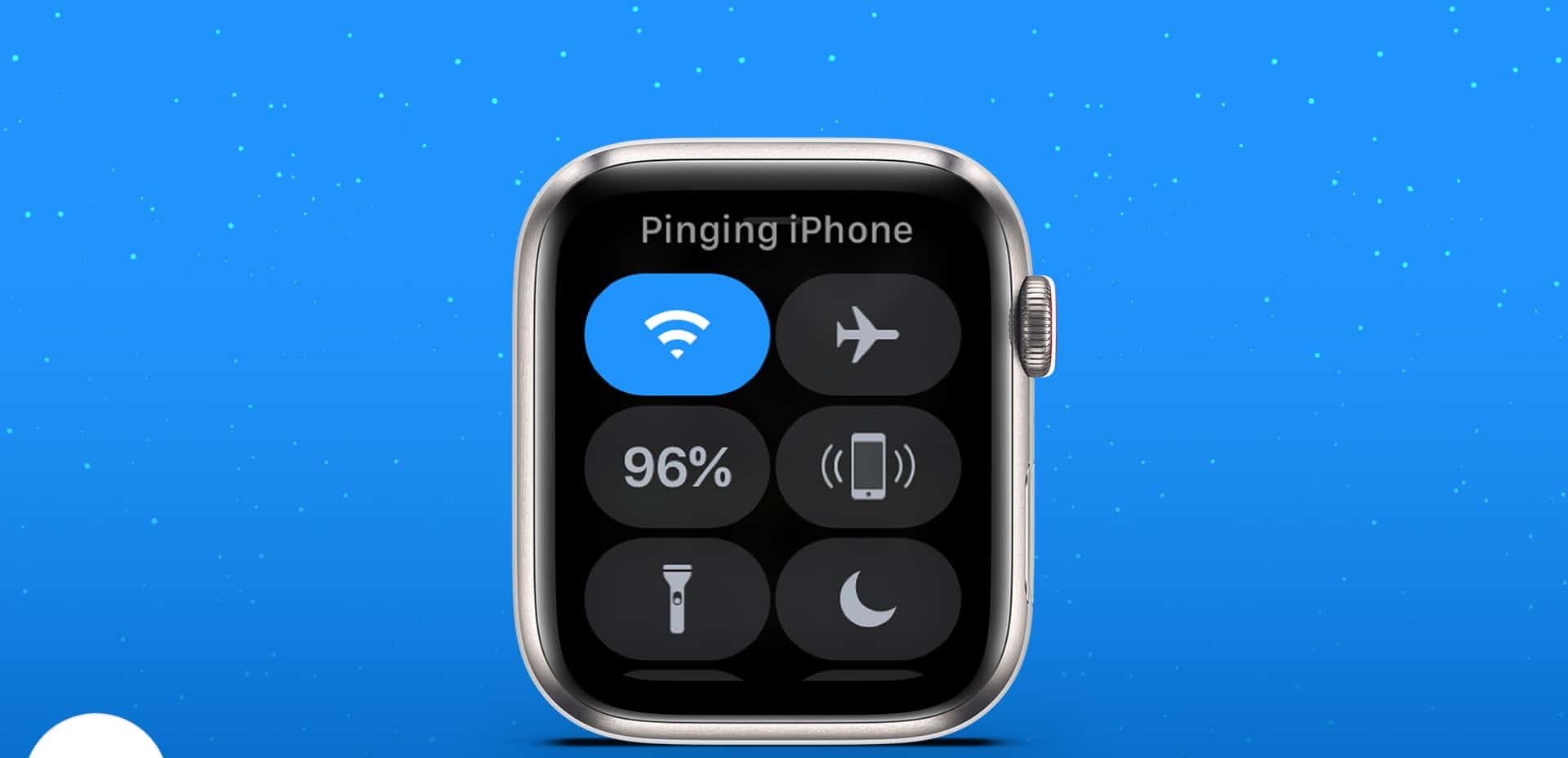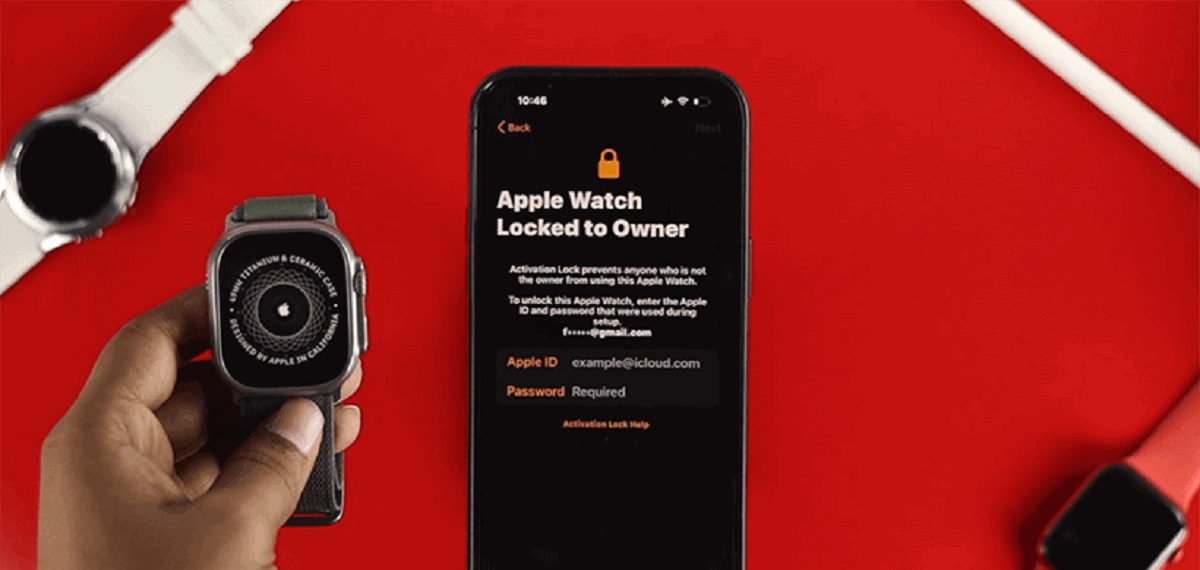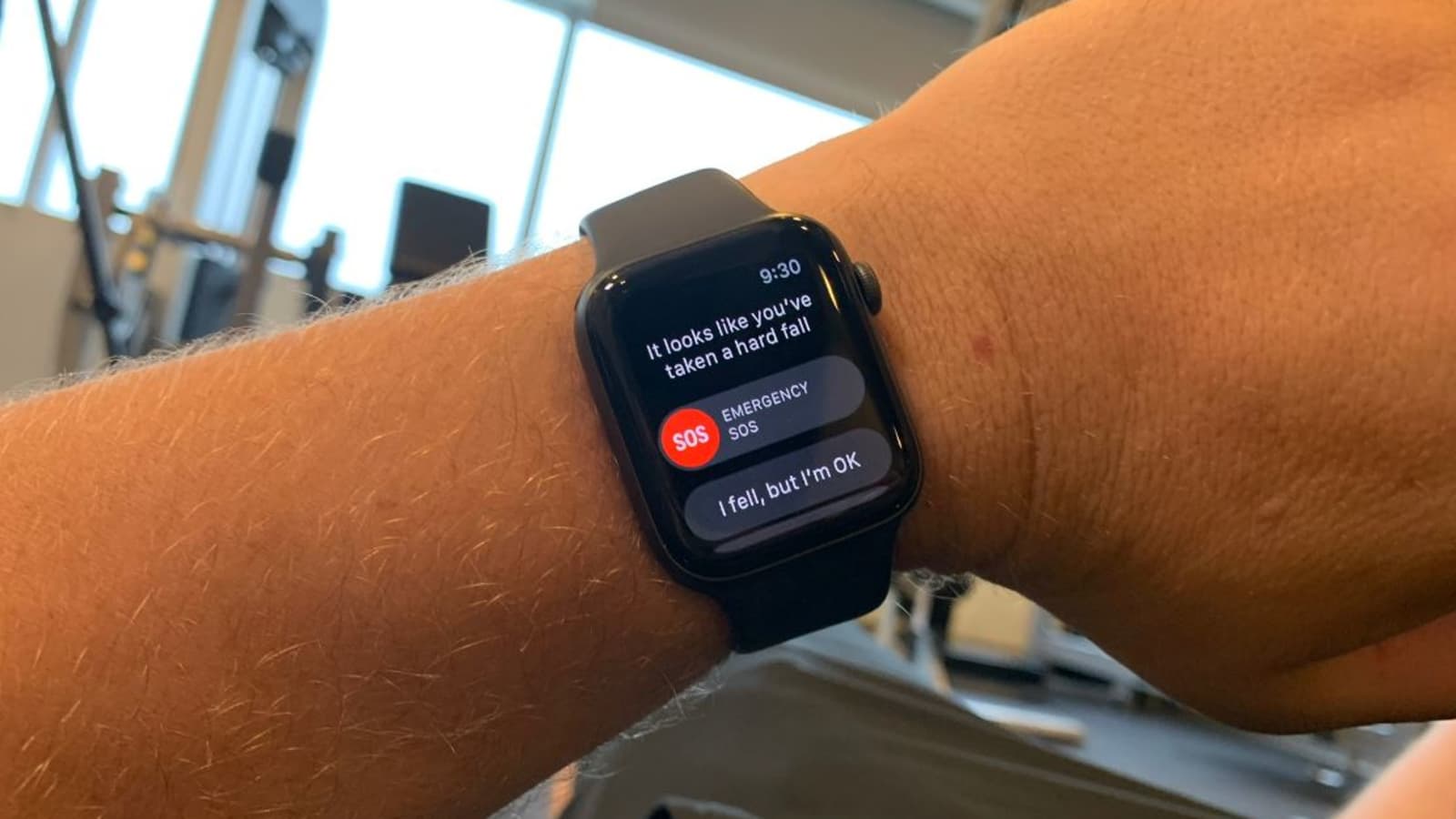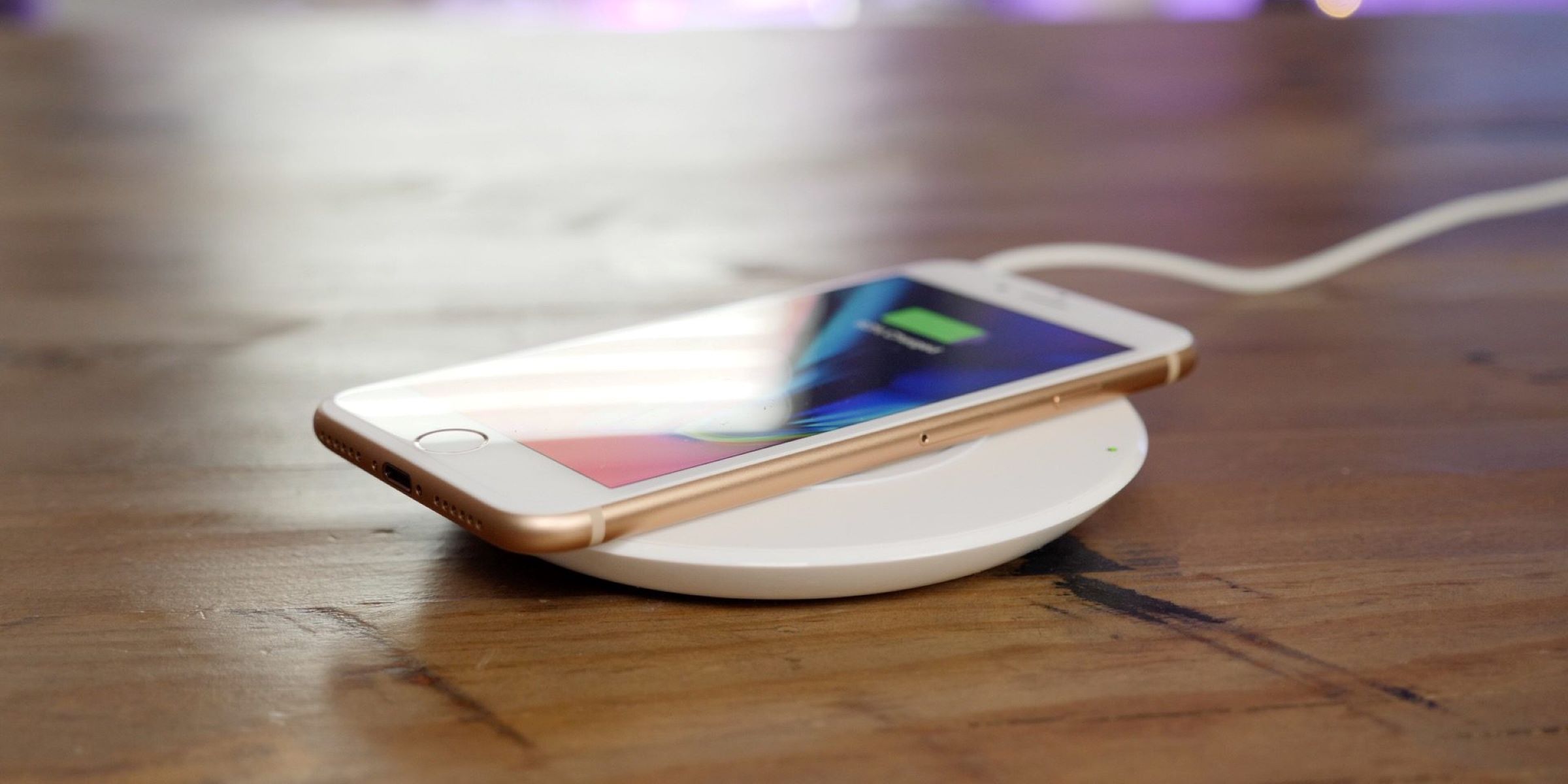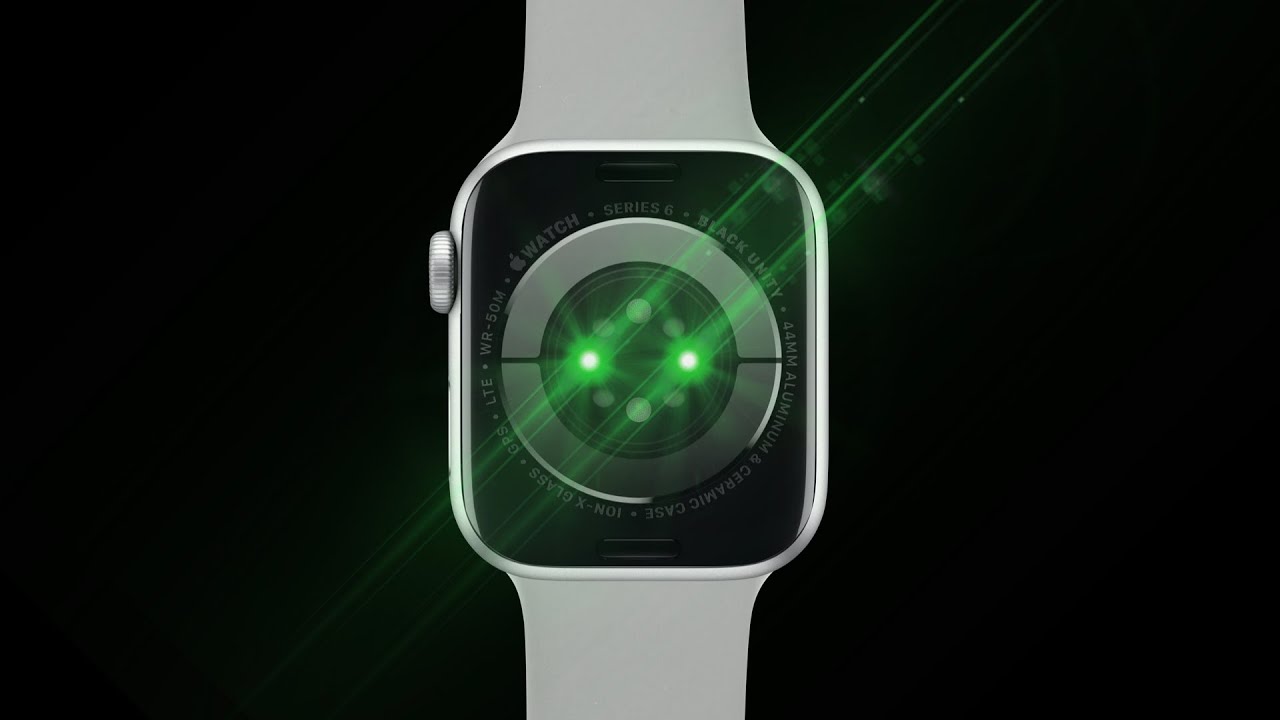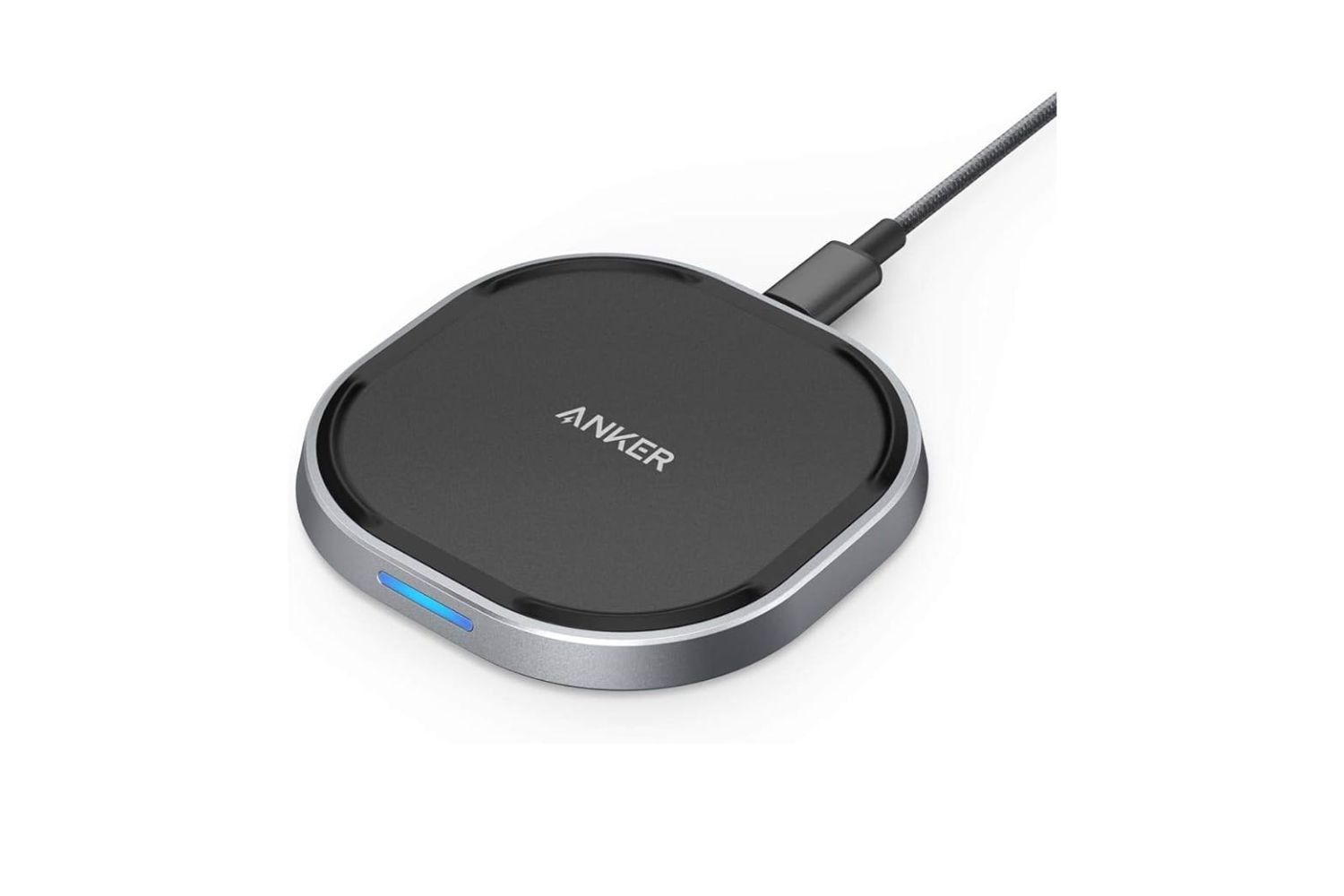Introduction
The Apple Watch is a revolutionary wearable device that seamlessly integrates technology into our daily lives. Released in 2015, it quickly gained popularity for its sleek design, advanced features, and seamless integration with Apple’s ecosystem. Designed to be worn on the wrist, the Apple Watch offers a range of functionalities, including fitness tracking, communication, notifications, and more.
With its intuitive user interface and powerful hardware, the Apple Watch has become a popular choice for tech enthusiasts, fitness enthusiasts, and fashion-conscious individuals alike. This smartwatch combines style and functionality, bridging the gap between fashion and technology.
Equipped with a range of built-in sensors and cutting-edge features, the Apple Watch provides users with a comprehensive suite of tools to monitor their health and fitness, stay connected, and access a wide range of applications. From tracking your heart rate and calculating daily steps to sending and receiving messages and making contactless payments, the Apple Watch has redefined what a smartwatch can do.
In this article, we will explore the fascinating world of the Apple Watch, delving into its history, examining its hardware components, discussing its operating system and user interface, and highlighting its standout features. Whether you’re a current Apple Watch owner, considering purchasing one, or simply curious about how it works, this article will provide you with a comprehensive understanding of this innovative device.
History of the Apple Watch
The Apple Watch was first announced by Apple CEO Tim Cook on September 9, 2014. It marked Apple’s official entry into the wearable technology market. The initial unveiling generated immense excitement and anticipation among technology enthusiasts and Apple fans.
Although it was not the first smartwatch on the market, the Apple Watch quickly established itself as a game-changer in the industry. Apple’s reputation for innovation and their strong brand presence propelled the device to great success right from the start.
The first-generation Apple Watch, also known as the Series 0, was released on April 24, 2015. It featured a rectangular touchscreen display and a digital crown on the side that allowed users to navigate through menus and zoom in and out on content. The device relied heavily on being paired with an iPhone to function fully.
Over the years, Apple continued to refine and improve the design and functionality of the Apple Watch. The Series 1 was introduced in 2016, featuring a faster processor and improved water resistance. This was followed by the Series 2 in the same year, which introduced built-in GPS and a brighter display.
In 2018, Apple released the Series 4 Apple Watch, which marked a significant leap forward in terms of design and features. It featured a larger display, improved heart rate monitoring capabilities, built-in ECG, fall detection, and a faster processor.
Today, the Apple Watch is in its seventh generation, known as the Series 7. It boasts a refined design, a larger and more durable display, faster charging, and enhanced health and fitness tracking features. Through software updates, previous generations of the Apple Watch have also received many of the latest features, ensuring continued support and improvement for existing users.
From its humble beginnings to its current status as a leading smartwatch, the Apple Watch has become an integral part of many people’s lives. It has not only changed the way we view and use wearable technology but has also influenced the industry as a whole, inspiring other companies to push the boundaries of innovation in the smartwatch market.
Hardware Components of the Apple Watch
The Apple Watch combines powerful hardware components to deliver a seamless and engaging user experience. Let’s take a closer look at the key components that make up this innovative wearable device.
Display: The Apple Watch features a vibrant and high-resolution OLED display, which provides crisp graphics and sharp text. The display is not only touch-sensitive but also supports Force Touch, allowing users to access additional functionality by applying varying levels of pressure.
Processor: At the heart of the Apple Watch is a custom-designed processor that ensures smooth performance and snappy responsiveness. With each generation, Apple has consistently improved the processing power, enabling faster app launches and seamless multitasking.
Battery: The Apple Watch is equipped with a rechargeable battery that offers all-day battery life. The exact battery life varies depending on usage, but Apple has optimized the device to strike a balance between performance and battery efficiency.
Sensors: The Apple Watch incorporates an array of sensors to track various aspects of the user’s health and activity. These include an optical heart rate sensor, an accelerometer, a gyroscope, a barometric altimeter, and an electrical heart sensor (available on select models). These sensors work together to provide accurate health and fitness data, enabling users to monitor their workouts, track their daily activity, and detect potential health issues.
Connectivity: The Apple Watch supports both Wi-Fi and Bluetooth connectivity, allowing it to seamlessly sync with an iPhone or connect to Wi-Fi networks for standalone functionality. This enables users to receive notifications, send messages, make phone calls, and access apps even when their iPhone is not nearby.
Storage: The Apple Watch comes with onboard storage, allowing users to store music, apps, and other data directly on the device. The amount of available storage varies depending on the model, with newer generations offering larger storage capacities.
Design and Materials: The Apple Watch is available in various models and finishes, each with its own unique design and materials. The casing options include aluminum, stainless steel, titanium, and ceramic, offering users a range of choices to match their personal style and preferences.
Water Resistance: The Apple Watch is designed to be water-resistant, with different models offering varying levels of water resistance. This makes it suitable for everyday activities such as swimming, showering, and washing hands without worrying about damaging the device.
These hardware components work in harmony to provide a seamless and powerful user experience, making the Apple Watch a versatile companion for tracking health and fitness, staying connected, and accessing a wide range of apps and features.
Operating System: watchOS
watchOS is the dedicated operating system that powers the Apple Watch. Developed by Apple, this operating system provides a seamless and intuitive user experience, tailored specifically for the unique form factor of a smartwatch.
With each new generation of the Apple Watch, Apple releases an updated version of watchOS, introducing new features, performance enhancements, and bug fixes. Let’s explore some key aspects of watchOS and how it contributes to the overall functionality of the Apple Watch.
Interface: watchOS features a highly intuitive and visually pleasing interface designed to make navigating and interacting with the Apple Watch effortless. The home screen displays a grid of app icons that can be easily accessed with a tap or through the digital crown. Users can customize the layout of their home screen by rearranging and organizing their apps.
Notifications: watchOS enables users to receive notifications from their iPhone directly on their Apple Watch. Whether it’s text messages, emails, calendar alerts, or social media notifications, users can quickly glance at their wrist to stay updated without needing to pull out their phone. Interactive notifications allow for actions like responding to messages or dismissing notifications with a simple swipe.
Health and Fitness Tracking: watchOS incorporates a comprehensive suite of health and fitness features, turning the Apple Watch into a powerful fitness companion. The built-in Activity app encourages users to be more active by tracking their daily movement, exercise, and standing goals. Additionally, the Apple Watch includes workout-specific modes, heart rate monitoring, sleep tracking, and integration with other fitness apps.
App Ecosystem: watchOS supports a wide range of apps specifically designed for the Apple Watch. These apps provide additional functionality and enhance the overall user experience. Users can access apps directly from their home screen or via Siri. The App Store on the Apple Watch allows users to browse and download apps directly to their device, making it easy to discover new and useful apps.
Siri Integration: watchOS features seamless integration with Siri, Apple’s voice assistant. Users can simply raise their wrist or say “Hey Siri” to activate Siri and perform various tasks, such as setting reminders, sending messages, making calls, checking the weather, getting directions, and more. Siri on the Apple Watch provides a convenient and hands-free way to interact with the device.
Customization: watchOS offers a range of customization options, allowing users to personalize their Apple Watch to suit their preferences. Users can choose from a variety of watch faces, customize complications, change the display preferences, and even create their own watch faces using personal photos or dynamic effects. This level of customization adds a personal touch to the overall look and feel of the Apple Watch.
watchOS continues to evolve with each new iteration, bringing new features, performance improvements, and expanded capabilities to the Apple Watch. This dedication to ongoing development ensures that users can enjoy an ever-improving user experience and take full advantage of the capabilities of their Apple Watch.
User Interface and Display
The user interface and display of the Apple Watch play a crucial role in delivering a seamless and intuitive user experience. From navigating apps to interacting with notifications, the user interface is designed to make interacting with the device easy and efficient.
Display: The Apple Watch features a high-resolution OLED display that offers vibrant colors and sharp visuals. The display is touch-sensitive, allowing users to interact with their watch by tapping, swiping, and using gestures. The size of the display varies depending on the Apple Watch model, with newer generations offering larger and edge-to-edge displays for an immersive viewing experience.
Watch Faces: One of the standout features of the Apple Watch is the ability to customize the watch face. Users can choose from a wide selection of watch faces, each with its own unique design and complications. Complications allow users to add widgets for quick access to information such as weather, calendar events, activity rings, and more. Users can easily switch between watch faces to match their style or the occasion.
Control Center: Similar to the control center on an iPhone, the Apple Watch has a control center that provides quick access to commonly used settings and controls. Swiping up from the bottom of the screen reveals the control center, where users can adjust settings such as brightness, toggle on/off features like Do Not Disturb and Theater Mode, and access shortcuts to functions like the flashlight, calculator, and timer.
Digital Crown: The digital crown is a small dial located on the side of the Apple Watch. It serves various purposes, including scrolling and zooming in apps, navigating through menus, and returning to the home screen. Pressing the digital crown acts as a home button, bringing users back to the main app screen or watch face.
Force Touch: The Apple Watch supports Force Touch, a technology that senses varying levels of pressure. This allows for additional functionality depending on the force applied. For example, Force Touch can reveal hidden menus or options in apps, change watch face complications, or delete notifications.
Gestures: In addition to touch input, the Apple Watch recognizes specific gestures. For example, raising the wrist activates the display so users can easily check the time or view notifications. Swiping left or right on the display allows users to navigate through different screens or easily switch between apps. These gestures add a natural and intuitive aspect to the user interface.
Accessibility: The Apple Watch includes a range of accessibility features to ensure that users of all abilities can comfortably use the device. These features include VoiceOver, which provides spoken feedback of on-screen information, larger text options, high contrast modes, and built-in haptics for tactile feedback.
The user interface and display of the Apple Watch are meticulously designed to be visually appealing, easy to navigate, and responsive to touch and gestures. These elements work together to create a user-friendly and engaging experience that makes interacting with the Apple Watch a breeze.
Sensors and Health Features
The Apple Watch is equipped with a variety of sensors and health features that make it a powerful tool for monitoring and improving personal wellness. These features allow users to track their activity levels, monitor their heart rate, receive personalized health insights, and more.
Heart Rate Monitor: The Apple Watch includes an optical heart rate sensor that continuously measures and tracks your heart rate throughout the day. This feature provides valuable data on resting heart rate, heart rate variability, and high heart rate notifications. Users can also initiate on-demand heart rate measurements to monitor their heart rate during workouts or moments of intense activity.
ECG (Electrocardiogram): Certain models of the Apple Watch come with built-in electrical heart sensors that allow users to take an electrocardiogram anytime, anywhere. This feature enables users to record the electrical impulses of their heart and can provide valuable insights into heart rhythm irregularities, such as atrial fibrillation. The ECG results can be stored and shared with healthcare professionals for further analysis.
Blood Oxygen Level: The latest generations of the Apple Watch include a blood oxygen sensor that measures the oxygen saturation level in your blood. This feature provides insights into your overall respiratory and cardiovascular health, allowing users to track and monitor changes in their blood oxygen levels over time.
Activity Tracking: The Apple Watch’s comprehensive activity tracking features help users monitor their daily movement and exercise habits. It tracks metrics such as steps taken, distance traveled, calories burned, and active minutes. The Activity Rings feature provides a visual representation of your daily activity, motivating you to achieve your daily goals and leading a more active lifestyle.
Workout and Fitness Tracking: The Apple Watch offers a variety of workout tracking modes catering to different activities such as running, cycling, swimming, yoga, and more. It uses GPS and accelerometer data to provide accurate metrics such as pace, distance, and elevation. The watch also provides real-time feedback during workouts, including heart rate zones and calorie burn estimates.
Sleep Tracking: The Apple Watch now includes sleep tracking features, allowing users to monitor their sleep patterns and gain insights into the quality and duration of their sleep. Sleep tracking on the Apple Watch helps users establish healthy sleep habits and improve their overall sleep health.
Fall Detection: The Apple Watch includes a fall detection feature that can detect when the wearer takes a hard fall. When a fall is detected, the watch sends an alert and provides options to call emergency services or dismiss the alert if it was a false alarm. This feature is particularly useful for older adults or those with medical conditions that may make them prone to falls.
Overall, the sensors and health features of the Apple Watch provide users with valuable data and insights to monitor their well-being, make informed health decisions, and stay motivated towards their fitness goals. Whether it’s keeping track of your heart rate, monitoring your sleep patterns, or receiving proactive health notifications, the Apple Watch offers a comprehensive set of tools for prioritizing your health and well-being.
Connectivity and Compatibility
The Apple Watch is designed to seamlessly connect and integrate with other Apple devices, ensuring a smooth and versatile user experience. Let’s explore the connectivity options and compatibility of the Apple Watch.
Bluetooth and Wi-Fi: The Apple Watch supports both Bluetooth and Wi-Fi connectivity. When paired with an iPhone, the Apple Watch leverages Bluetooth to establish a connection, allowing users to receive notifications, make and receive calls, and access various features. Wi-Fi connectivity enables the Apple Watch to stay connected to the internet even when not in range of the paired iPhone, providing standalone functionality for apps and services that require an internet connection.
Cellular Connectivity: Some models of the Apple Watch offer cellular connectivity, allowing users to stay connected and access features even when their iPhone is not nearby. With a cellular-enabled Apple Watch, users can make and receive calls, send messages, stream music, access Siri, and use certain apps directly from their wrist, regardless of their iPhone’s location.
iOS Compatibility: The Apple Watch is designed to work seamlessly with iPhones. It requires an iPhone 6s or later running the latest version of iOS. Compatibility ensures that users can seamlessly pair their Apple Watch with their iPhone, sync data, and access advanced features such as call and message forwarding, app installations, and software updates. The close integration between the Apple Watch and iOS ecosystem allows for effortless synchronization and a consistent user experience.
App Compatibility: The Apple Watch is compatible with a wide array of third-party apps available in the App Store. Developers have created apps specifically tailored for the Apple Watch, offering a range of functionalities from fitness tracking and productivity to entertainment and communication. The availability of these apps greatly enhances the versatility and usefulness of the Apple Watch, allowing users to personalize their experience and access their favorite apps right from their wrist.
Apple Ecosystem Integration: The Apple Watch seamlessly integrates with other Apple devices and services, enhancing the overall user experience. For example, the Apple Watch can control audio playback on other Apple devices using the Now Playing app. It also supports Apple Pay, allowing users to make secure payments directly from their wrist, and can be used as a digital wallet through Apple Wallet for storing cards, tickets, and passes.
Health and Fitness Ecosystem: The Apple Watch integrates with the Health app on the iPhone, enabling users to have a consolidated view of their health data. Data collected by the Apple Watch, such as heart rate, steps, and sleep analysis, can be synchronized and shared with the Health app, allowing users to gain deeper insights into their overall health and well-being. The Apple Watch can also connect with a wide range of health and fitness apps, creating a comprehensive health and wellness ecosystem.
Overall, the connectivity and compatibility features of the Apple Watch ensure a seamless integration with other Apple devices and services, allowing users to stay connected, access apps and services, and personalize their experience. Whether used as a companion to an iPhone or as a standalone device with cellular connectivity, the Apple Watch offers a versatile and connected wearable experience.
Battery Life and Charging
The Apple Watch features a built-in rechargeable battery that provides all-day battery life, allowing users to enjoy its functionality throughout the day without constantly needing to recharge. The battery life of the Apple Watch varies depending on usage and the specific model, but Apple has made significant improvements over the years to ensure optimal performance and longevity.
All-Day Battery Life: The Apple Watch is designed to last a full day on a single charge, allowing users to wear it from morning to night without needing to recharge. While actual battery life may vary depending on usage patterns, settings, and other factors, Apple has optimized the Apple Watch for typical day-to-day usage to ensure it can keep up with the demands of everyday life. This means being able to track activities, receive notifications, make calls, and use apps throughout the day without needing to worry about battery life.
Battery Saving Features: To maximize battery life, the Apple Watch includes several features and optimizations. These include an ambient light sensor that adjusts the brightness of the display based on ambient light conditions, power-efficient components, and software optimizations. Additionally, users can enable power-saving modes, such as Theater Mode, which turns off the display and mutes notifications temporarily, further conserving battery life when needed.
Charging Options: Charging the Apple Watch is convenient and effortless. The device uses a magnetic charging cable or a charging dock that attaches magnetically to the back of the watch. The magnetic connection ensures a secure and reliable charging experience. The Apple Watch can be charged using a traditional wall adapter or by connecting to a USB port on a computer or laptop. Additionally, there are third-party charging accessories available, such as wireless charging pads and stands, that offer additional convenience and flexibility for charging the Apple Watch.
Fast Charging: With each new generation, Apple has introduced faster charging capabilities for the Apple Watch. This means that users can get a quick burst of power in a short amount of time. For example, some models support fast charging, which can provide up to 80% charge in just around an hour. This is especially useful when users need to charge their Apple Watch quickly before heading out or when they have a limited amount of time to charge the device.
Battery Health Management: To ensure the longevity of the battery, the Apple Watch includes battery health management which helps optimize charging patterns based on your usage habits. This feature helps maintain the overall health of the battery over time, prolonging its lifespan and maximizing its capacity. It works in the background by analyzing charging patterns and adjusting the charging behavior to minimize unnecessary wear on the battery cells.
Overall, the Apple Watch provides a balance between battery life and functionality, allowing users to enjoy a full day of usage without frequently needing to recharge. With convenient charging options and fast charging capabilities, along with battery health management, the Apple Watch is designed to provide a reliable and long-lasting battery experience.
Apps and App Store
The Apple Watch has its own dedicated App Store, offering a wide range of apps specifically designed for the device. These apps enhance the functionality of the Apple Watch, allowing users to personalize their experience and access a variety of features right from their wrist.
App Store on the Apple Watch: The App Store is easily accessible directly from the Apple Watch. Users can browse and download apps directly on their device, eliminating the need to rely solely on the App Store on their iPhone. The App Store on the Apple Watch showcases a curated selection of apps, tailored specifically for the Apple Watch’s smaller screen and unique capabilities.
Health and Fitness Apps: The Apple Watch app ecosystem includes a broad range of health and fitness apps. These apps provide features such as specialized workout tracking, guided meditation, nutrition tracking, sleep analysis, and more. Users can choose from a variety of apps to find the ones that best suit their specific health and fitness goals.
Productivity and Communication Apps: The Apple Watch offers a variety of productivity and communication apps that allow users to stay connected and efficiently manage their tasks. From email clients and messaging apps to calendar and note-taking apps, the App Store offers a range of options for those who want to seamlessly access productivity tools directly from their wrist.
Travel and Navigation Apps: Travelers can benefit from apps that provide real-time flight information, hotel bookings, and navigation guidance on the Apple Watch. Whether it’s checking flight updates, getting directions while walking or driving, or finding nearby points of interest, these apps make travel more accessible and convenient.
Entertainment Apps: The Apple Watch also offers a range of entertainment apps to keep users entertained on the go. From music streaming apps that allow users to control playback on their iPhone or directly from the watch to trivia games and interactive storytelling apps, the App Store has options to keep users engaged and entertained.
Utilities and Tools: The App Store on the Apple Watch includes a variety of utilities and tools that can simplify everyday tasks. Examples include weather apps, calculators, language translators, timers, and more. These apps provide quick access to information and tools that can be useful in various situations.
Customized Complications: Apps on the Apple Watch can also provide complications, which are small bits of information displayed on the watch face. These complications can be customized to display relevant data from compatible apps, such as weather conditions, upcoming calendar events, fitness stats, and more. This allows users to personalize their watch face and access important information at a glance.
The Apple Watch app ecosystem continues to grow and evolve, with developers continually creating new and innovative apps tailored for the device. Whether it’s for health and fitness, productivity, communication, or entertainment, the App Store on the Apple Watch offers a selection of apps that enhance the user experience and make the device even more versatile and useful.
Personalization: Watch Faces and Bands
One of the appeals of the Apple Watch is the ability to personalize its appearance to suit individual style and preferences. From an array of watch faces to interchangeable bands, the Apple Watch offers a wide range of options for personalization.
Watch Faces: The Apple Watch allows users to choose from a vast selection of watch faces, each with its unique design and features. Whether it’s a classic analog watch face, a modern digital face, or a fun and playful design, there’s a watch face to suit every taste. Users can customize their chosen watch face by adding complications, which are small widgets that display information such as weather conditions, calendar events, heart rate, and more. This customization allows users to create a watch face that not only looks appealing but also provides at-a-glance access to important information.
Custom Watch Faces: In addition to the pre-designed watch faces, users can also create their custom watch faces using their own personal photos, artwork, or even dynamic effects. This level of personalization allows users to truly make their Apple Watch a reflection of their unique personality and style. Custom watch faces can be made using the Photos app or by third-party apps that offer watch face creation tools.
Interchangeable Bands: Another way to personalize the Apple Watch is by swapping out the bands. Apple and third-party manufacturers offer a wide variety of bands in different materials, colors, and styles. From sporty silicone bands to elegant leather straps or even metal link bracelets, the options are nearly endless. This flexibility allows users to switch up the look of their Apple Watch to match their outfit, activity, or personal preference. The easy-to-use band swapping mechanism allows for quick and hassle-free customization.
Third-Party Accessories: In addition to interchangeable bands, there are a plethora of third-party accessories available for the Apple Watch. These include protective cases, charging stands, screen protectors, and more. These accessories not only offer additional functionality and protection but also provide further personalization options for users to make their Apple Watch uniquely their own.
Sharing Watch Faces and Bands: Apple also introduced the ability to share watch faces and bands with other Apple Watch users. Users can create and customize watch faces and share them with friends, allowing them to use the same designs. The watch face sharing feature enables users to discover new and creative watch face designs from others, fostering a sense of community and personal expression.
Personalization is a key aspect of the Apple Watch, allowing users to make their device uniquely theirs. Whether it’s choosing a watch face that suits their style, customizing complications for convenience, or changing bands to match their mood or outfit, the Apple Watch offers a level of personalization that allows users to express their individuality and make their watch truly their own.
Exercise and Fitness Tracking
The Apple Watch is a powerful fitness companion, equipped with advanced features and sensors that make it an excellent tool for exercise and fitness tracking. Whether you’re a casual fitness enthusiast or a dedicated athlete, the Apple Watch provides a comprehensive suite of health and fitness tracking functionalities.
Workout Modes: The Apple Watch offers a wide range of workout tracking modes designed to cater to various activities. From running and cycling to swimming and yoga, the Apple Watch has specific workout modes that provide accurate tracking and metrics. Each workout mode is optimized to capture relevant data, such as distance covered, pace, heart rate, calories burned, and more.
GPS Tracking: Incorporating built-in GPS capabilities, the Apple Watch can accurately track outdoor activities without the need to carry an iPhone. This allows users to leave their phone behind while going for a run or bike ride and still receive accurate distance and route tracking.
Heart Rate Monitoring: The Apple Watch continuously monitors your heart rate throughout the day, providing valuable insights into your cardiovascular health. During workouts, the watch provides real-time heart rate data to help you maintain the desired intensity level and make informed adjustments to your exercise routine. The heart rate data is also used to calculate calorie burn and analyze your overall fitness trends.
Activity Rings: The Activity Rings feature on the Apple Watch provides a simple yet effective way to monitor your daily activity levels. The rings represent three activity metrics: Move, Exercise, and Stand. The Move ring tracks the number of calories burned, the Exercise ring tracks the duration of moderate to high-intensity exercise, and the Stand ring reminds you to stand up and move around every hour. Completing all three rings each day serves as a visual indicator of meeting your overall activity goals.
Fitness Challenges and Achievements: The Apple Watch encourages and motivates users with various fitness challenges and achievements. These include milestones for streaks, personal records, and awards for achieving specific goals. Users can earn achievements for meeting specific fitness milestones and enjoy friendly competitions with friends and family through activity sharing and competitions.
Sleep Analysis: The Apple Watch now includes sleep tracking capabilities, allowing users to monitor their sleep patterns and gain insights into the quality and duration of their sleep. By wearing the Apple Watch while sleeping, users can access data on their sleep duration, heart rate variability, and overall sleep quality. Sleep analysis helps users establish healthy sleep habits and optimize their rest and recovery for better overall well-being.
Integration with Fitness Apps: The Apple Watch seamlessly integrates with a variety of fitness apps, allowing users to leverage their preferred workout tracking apps and services. Whether it’s popular fitness apps like Strava, Nike Run Club, or personalized training programs, users can access these apps directly from their Apple Watch, track their workouts, and utilize their favorite features alongside the health and fitness capabilities of the Apple Watch.
With its robust fitness tracking features, accurate sensors, and seamless integration with third-party apps, the Apple Watch is a powerful tool for anyone striving to improve their fitness, monitor their health, and maintain an active lifestyle.
Notifications and Communication
The Apple Watch excels in keeping users connected and informed through its comprehensive notifications and communication features. Seamlessly integrated with the iPhone, the Apple Watch allows users to stay up to date with important notifications and communicate effortlessly right from their wrist.
Notifications: The Apple Watch delivers notifications from various apps and services directly to the wrist, keeping users informed without needing to take out their iPhone. Users can receive and view notifications for incoming calls, text messages, emails, calendar events, social media updates, and more. With a gentle tap on the wrist, users can discreetly check incoming notifications, allowing them to stay connected without being overly distracted.
Customizable Alerts: Users have the option to customize the types of notifications they receive on their Apple Watch, ensuring they only receive alerts that matter most to them. They can choose which apps can send notifications to the watch, set priority levels for different types of notifications, and even modify the notification style (such as sound, haptic feedback, or banners) to suit their preferences.
Quick Glances and Actions: Whenever a notification arrives, users can quickly glance at their Apple Watch to preview the message or content without the need to open the app on their iPhone. They can also take immediate actions directly from the watch, such as responding to a text message with preset replies, dictating a reply using voice-to-text, or deleting an email.
Phone Calls: The Apple Watch allows users to make and receive calls directly from their wrist, thanks to built-in microphones and speakers. When a call comes in, users can answer or decline the call, as well as access additional call-related options like transferring the call to the iPhone or using a paired Bluetooth headset for privacy.
Messages and Emails: In addition to quick replies, the Apple Watch lets users dictate text messages and emails using voice-to-text dictation. They can also send animated emojis and use preset phrases for faster responses. The watch can also display the full content of messages and emails, allowing users to read them without needing to reach for their iPhone.
Third-Party App Notifications: The Apple Watch integrates with various third-party apps, enabling users to receive app-specific notifications on their wrist. From news apps and weather updates to social media notifications and productivity reminders, users can stay updated with their favorite apps without needing to constantly check their iPhone.
Siri Integration: The Apple Watch features seamless integration with Siri, Apple’s voice assistant. Users can activate Siri by raising their wrist or saying “Hey Siri” and benefit from a hands-free experience. Siri can help with various tasks, such as setting reminders, sending messages, making calls, checking the weather, controlling smart home devices, and more, all from the convenience of the Apple Watch.
Communication with Digital Touch: The Apple Watch offers unique communication capabilities through Digital Touch. Users can send personalized sketches, tap patterns, or even their heartbeat to individuals who also have an Apple Watch, allowing for a more intimate and interactive form of communication.
The notification and communication features of the Apple Watch enable users to stay connected, informed, and responsive, all while keeping their iPhone in their pocket or bag. With its seamlessly integrated notifications and versatile communication capabilities, the Apple Watch enhances communication efficiency and convenience for users on the go.
Apple Pay and Wallet Integration
The Apple Watch offers seamless integration with Apple Pay and the Wallet app, providing users with convenient and secure ways to make payments, store cards, passes, and tickets, all from their wrist.
Apple Pay: With Apple Pay, users can make contactless payments using their Apple Watch at supported retailers, restaurants, and other establishments with just a tap of their wrist. By adding their credit, debit, or prepaid cards to Apple Wallet on their iPhone, users can securely make purchases without needing to carry their physical cards. The Apple Watch utilizes NFC (Near Field Communication) technology, allowing users to hold their watch close to an Apple Pay-compatible payment terminal to complete transactions quickly and securely.
Wallet App: The Wallet app on the Apple Watch consolidates various cards, passes, and tickets in one place, eliminating the need to carry physical copies. Users can add boarding passes, event tickets, loyalty cards, and more to the Wallet app on their iPhone and access them effortlessly from their Apple Watch. With a simple tap on the wrist, the Apple Watch can display the relevant barcode or pass information for quick and easy scanning.
Security and Authentication: When making payments with Apple Pay on the Apple Watch, the device utilizes multiple layers of security to protect users’ card information. Each transaction requires authentication, either via Face ID, Touch ID, or a passcode, ensuring only authorized users can initiate payments. Furthermore, Apple Pay does not store the actual card numbers on the device, adding an extra layer of security.
Transportation and Access Cards: The Apple Watch, through Wallet integration, offers the ability to add transportation cards, such as transit passes or city-specific cards. This enables users to conveniently tap their wrist to enter public transportation systems or access their workplace or gym. Usage of transportation and access cards directly from the Apple Watch provides a seamless and efficient experience for daily commuters and cardholders.
Integration with Third-Party Apps: Apple Pay and Wallet integration extends to various third-party apps, allowing users to make payments and access card information without needing to open individual apps. This further streamlines the payment process and enhances the overall convenience of using the Apple Watch for transactions.
Compatibility at Global Scale: Apple Pay and Wallet integration is expanding rapidly, with support for an increasing number of financial institutions, retailers, and countries worldwide. This global compatibility ensures that users can leverage the convenience of the Apple Watch for payments and wallet functions in various locations, making it an invaluable tool for both local and international use.
In summary, Apple Pay and Wallet integration on the Apple Watch offer a secure and convenient way to make payments, store cards and passes, and simplify everyday transactions. By leveraging the power of NFC technology and seamless authentication, the Apple Watch makes the payment process effortless while ensuring the highest levels of security and privacy.
Music and Audio Features
The Apple Watch offers an immersive music and audio experience, allowing users to enjoy their favorite tunes, podcasts, and audio content directly from their wrist. With its built-in music player, seamless integration with streaming services, and advanced audio capabilities, the Apple Watch provides a versatile audio companion.
Music Playback: Users can enjoy their music library from their Apple Watch, which can be synced with their iPhone. This allows for wireless playback of music on the go, directly to Bluetooth-enabled headphones or speakers. The Apple Watch also supports the streaming of music from popular services such as Apple Music, Spotify, and Pandora, providing easy access to a vast library of songs right from the wrist.
Podcast Playback: Podcast enthusiasts can enjoy their favorite shows and episodes directly on the Apple Watch. Users can subscribe to podcasts and sync their episode library with their Apple Watch, allowing for offline playback. Whether during a workout, commute, or leisurely stroll, users can stay up to date with their favorite podcasts without needing their iPhone.
Audio Controls: With the Apple Watch, users have complete control over their audio playback. They can easily play, pause, skip tracks, adjust volume, and control playback settings directly from their wrist. The Digital Crown can be used to fine-tune the volume or navigate through playlists and podcasts with precision.
Offline Listening: Users can sync playlists, albums, podcasts, and audiobooks to their Apple Watch for offline listening. This means that they can go for a run or engage in other activities without needing to carry their iPhone and still have access to their favorite audio content.
Now Playing Complication: The Apple Watch offers a Now Playing complication that can be added to watch faces, providing quick and convenient access to playback controls. This allows users to control their music or audio content with a simple tap on their watch face, without needing to navigate through the Music app.
Audio Feedback and Siri Playback Control: Siri integration on the Apple Watch makes it easy to control music and audio playback through voice commands. Users can ask Siri to play a specific song, artist, or genre, skip tracks, adjust volume, and more. Siri’s voice feedback provides an interactive and hands-free experience, allowing users to stay focused on their activities.
AirPods Integration: The Apple Watch seamlessly integrates with Apple’s AirPods and other Bluetooth headphones. When paired with AirPods, the Apple Watch offers a truly wireless audio experience, syncing playback and providing a hassle-free connection. Users can easily switch between iPhone and Apple Watch audio playback for a seamless transition.
Audio Guided Workouts: The Apple Watch offers audio-guided workouts through the Fitness app. Users can choose from a variety of workout types, including outdoor runs, walks, cycling, and more. During these workouts, audio cues and prompts are provided to guide users through their exercise routine, making the Apple Watch an ideal fitness companion.
The music and audio features of the Apple Watch provide users with a rich audio experience right from their wrist. Whether it’s syncing and controlling personal music libraries, streaming from popular services, enjoying podcasts, or engaging in audio-guided workouts, the Apple Watch ensures that users have a convenient and immersive audio companion wherever they go.
Siri Integration
Siri, Apple’s intelligent voice assistant, is seamlessly integrated into the Apple Watch, providing users with a convenient and hands-free way to interact with their device. With just a simple command or a raise of the wrist, users can activate Siri and access a wide range of features and services.
Voice Commands: Users can activate Siri on the Apple Watch by saying “Hey Siri” or by raising their wrist and speaking directly to their device. This hands-free activation allows users to engage with Siri while on the go, without the need to reach for their iPhone. Users can ask Siri to perform tasks such as sending messages, making phone calls, setting reminders, checking the weather, or even playing their favorite music.
Notifications and Alarms: Through Siri integration, users can set up timers, alarms, and reminders simply by speaking to the Apple Watch. This feature is especially useful when users have their hands full or are engaged in an activity where they cannot easily interact with their device. Siri can create and manage reminders, ensuring important tasks and appointments are not forgotten.
App Navigation and Control: Siri on the Apple Watch allows users to launch apps directly by voice command, saving time and effort. They can open apps like Messages, Calendar, Weather, or Music and access specific features or content within those apps, all without needing to navigate through the watch’s interface manually.
Information and Knowledge: Siri is an invaluable source of information, and the Apple Watch brings that knowledge to your wrist. Users can ask Siri questions about a wide range of topics, from general knowledge to specific inquiries. Siri can provide weather updates, sports scores, stock market information, calculations, translations, and more, allowing users to stay informed quickly and conveniently.
Smart Home Control: The Apple Watch, through Siri integration, enables users to control their compatible smart home devices using voice commands. Whether it’s adjusting the thermostat, turning on/off lights, or locking doors, Siri acts as a central hub for managing a connected smart home ecosystem without needing to access individual apps.
Health and Fitness Tracking: Siri can assist in health and fitness tracking on the Apple Watch. Users can ask Siri for the current activity status, initiate workout tracking, check heart rate, or request information on workout routines and tips. Siri’s voice guidance enhances the overall fitness experience, providing essential information and feedback during workouts.
Communication and Messaging: Siri allows for hands-free communication and messaging through the Apple Watch. Users can dictate text messages, emails, and voice memos, or initiate phone calls using Siri’s natural language processing capabilities. This hands-free communication ensures that users can stay connected and in touch with their contacts conveniently.
Integration with Third-Party Apps: Siri on the Apple Watch is also integrated with various third-party apps, allowing users to control and interact with those apps using voice commands. This expanded integration enhances the overall functionality of the Apple Watch, providing an effortless and seamless user experience.
Siri integration on the Apple Watch enhances the device’s usability and convenience. Through voice commands, users can interact with their watch, access information, control their device, manage tasks, and perform a wide range of actions with ease. Siri’s integration ensures that the Apple Watch is both a powerful assistant and a convenient companion on the wrist.
Using the Apple Watch with an iPhone
The Apple Watch is designed to seamlessly integrate with an iPhone, creating a powerful combination that enhances the user experience. Whether it’s setting up the watch, syncing data, or unlocking advanced features, the relationship between the Apple Watch and iPhone is essential.
Setup and Pairing: Pairing the Apple Watch with an iPhone is a straightforward process. Users can simply bring their Apple Watch close to their iPhone, open the Apple Watch app, and follow the on-screen instructions to complete the setup. This process establishes a secure Bluetooth connection between the devices and allows for data sharing and synchronization.
Data Synchronization: The Apple Watch and iPhone maintain a continuous connection, enabling seamless synchronization of data. Health and fitness data, messages, notifications, app installations, and settings are all synchronized between the devices, ensuring a consistent experience across both devices. This synchronization allows users to effortlessly access and manage their data from either device.
Continuity and Handoff: Continuity is a feature that allows users to start tasks on one device and seamlessly continue them on another. With Handoff, users can, for example, start reading an email on their iPhone and then switch to their Apple Watch to continue reading from where they left off. This continuity ensures a seamless transition between devices, fitting the needs and preferences of individual users.
Device Independence: While the Apple Watch is designed to work in tandem with the iPhone, it can also function independently for certain tasks. For example, the Apple Watch can measure steps, heart rate, and activity tracking, even when the iPhone is not nearby. The cellular-enabled models allow for phone calls, messaging, and app usage without the iPhone’s presence, offering greater independence and versatility.
Call and Message Forwarding: The Apple Watch allows users to receive and make phone calls, answer messages, and view notifications even when their iPhone is not within reach. When a call comes in, users can answer it directly from their Apple Watch, using the built-in microphone and speaker or by pairing Bluetooth headphones. Messages can also be read, replied to, and initiated directly from the Apple Watch, allowing users to communicate without needing their iPhone.
Remote Control and Tracking: The Apple Watch can also act as a convenient remote control for various iPhone functions. Users can control music playback, adjust volume, skip tracks, and manage audio settings directly from their wrist. The Apple Watch can even remotely take photos on the iPhone, allowing users to easily capture group shots or selfies without using a timer.
Security Features: When paired with an iPhone, the Apple Watch gains additional security features. For example, users can enable wrist detection, which requires the watch to be worn for features like Apple Pay and unlocking the iPhone. Lost Mode can be activated from the paired iPhone to remotely lock and track the Apple Watch in case of loss or theft.
The relationship between the Apple Watch and iPhone unlocks a wealth of additional features and functionality. By working seamlessly together, these devices create a holistic user experience, ensuring convenience, continuity, data synchronization, and enhanced capabilities for users in their daily lives.
Troubleshooting and Tips for Better Performance
While the Apple Watch is designed to be reliable and user-friendly, there may be times when you encounter issues or want to optimize its performance. Here are some troubleshooting tips and recommendations for better performance with your Apple Watch.
Restart or Reset: If you encounter any issues with your Apple Watch, a simple restart may help resolve minor glitches. To restart, press and hold the side button until the power off slider appears, then drag it to turn off the device. To turn it back on, press and hold the side button again. If problems persist, you can also try resetting your Apple Watch by going to Settings > General > Reset > Erase All Content and Settings. Note that this will delete all data on your watch, so it’s recommended to back up your data beforehand.
Connectivity Issues: If your Apple Watch is not connecting to your iPhone or experiencing connectivity issues, ensure that Bluetooth and Wi-Fi are enabled on both devices. Make sure they are in close range and unobstructed. In case of Wi-Fi connectivity problems, try forgetting and reconnecting to your Wi-Fi network on your iPhone, which may resolve the issue on the Apple Watch as well.
Battery Optimization: To optimize battery life on your Apple Watch, you can make a few adjustments. Adjust screen brightness, enable Power Saving Mode, turn off notifications for unnecessary apps, and manage background refresh for apps that consume excessive battery. Additionally, disabling the Always-On Display (if available on your model) can help conserve battery life. It may also be helpful to identify and close any battery-intensive apps running in the background.
App Performance: If you encounter issues with specific apps on your Apple Watch, try force-closing and reopening the problematic app. To do this, open the app and press and hold the side button until the power options appear. Then, release the side button and press and hold it again until the app quits. Finally, reopen the app from the app menu. If the problem persists, ensure that the app is up to date, as updates often include bug fixes and performance improvements.
Software Updates: Keeping your Apple Watch and iPhone up to date with the latest software is essential for optimal performance and stability. Regularly check for available watchOS updates on your iPhone through the Apple Watch app (under General > Software Update) and install them when prompted. Updating both devices ensures compatibility and access to the latest features, bug fixes, and security enhancements.
Regular Maintenance: Like any electronic device, regular maintenance can help keep your Apple Watch in top condition. Clean the watch and the band regularly with a non-abrasive, lint-free cloth. Ensure the watch is dry if it comes into contact with water, and avoid exposing it to extreme temperatures or wearing it while engaging in activities that may cause damage. Additionally, periodically check the condition of the band and ensure it is securely fastened to prevent accidental loss.
If you encounter persistent issues with your Apple Watch, consider reaching out to Apple Support for further assistance. They can provide guidance specific to your situation and help resolve any ongoing problems.
Conclusion
The Apple Watch has truly revolutionized the wearable technology market, offering a powerful and versatile device that seamlessly integrates with our lives. Whether it’s tracking our health and fitness, receiving notifications, staying connected, or accessing a multitude of apps, the Apple Watch provides a comprehensive and convenient user experience.
From its sleek design and high-resolution display to its advanced sensors and health tracking features, the Apple Watch offers a multitude of functionalities that cater to a wide range of user needs. With seamless integration with the iPhone, users can effortlessly sync and access their data, receive notifications, and control various aspects of their iPhone experience from their wrist.
The Apple Watch’s ability to personalize itself through customizable watch faces and interchangeable bands allows users to showcase their individual style and express their unique personality. With Siri integration, users can effortlessly interact with their Apple Watch through voice commands, making tasks more convenient and hands-free.
Enhanced connectivity with Apple Pay and Wallet integration allows for convenient and secure payment transactions, as well as easy access to stored cards and passes. On top of that, the Apple Watch serves as a useful tool in the audio realm, providing an immersive music and audio experience right on the wrist.
While the Apple Watch is designed to be user-friendly and reliable, troubleshooting tips and regular maintenance can help address any issues and ensure optimal performance. Regular software updates further enhance the device’s functionality and security.
Overall, the Apple Watch has transformed the way we interact with technology, seamlessly integrating into our daily lives to provide convenience, connectivity, and a wealth of features and functionalities right on our wrists. With its continuous advancements and integration within the Apple ecosystem, the Apple Watch solidifies its place as a leader in the wearable technology market.







